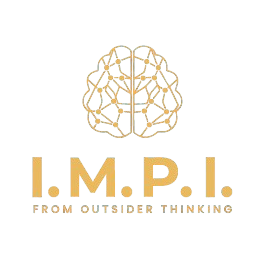A marketing team at a global firm struggled with stagnation in their campaigns. Despite following industry-standard models, their strategies lacked innovation and impact. The team’s mindset was fixed on replicating past successes and imitating competitor approaches, which stifled creativity and led to mediocre results.
Challenge
The team needed to reframe its collective mindset to embrace intellectual independence, cultivate creativity, and develop campaigns that stood out in a competitive market.
Application of the I.M.P.I. ™ Model with “The Why to How” Mindset and the Link-Factor
Reframing Mindsets
The team began with a mindset workshop based on the LVAR (Listen, Visualize, Analyze, React) and RVAR (Read, Visualize, Apply, Reassess) principles:
- Listen: Each member reflected on past challenges and feedback.
- Visualize: They imagined innovative solutions that resonated with their brand values and customer needs.
- Analyze: They assessed how traditional approaches had constrained their creative potential.
- React: The team committed to challenging assumptions and exploring new pathways.
The Why to How Strategy
The team questioned the why behind each campaign—why they chose specific themes, channels, or target audiences—and transitioned to how they could innovate while maintaining alignment with their goals. This questioning shifted their focus from replicating norms to creating unique value.
Link-Factor Integration
By incorporating the I.M.P.I. ™ Model’s Link-Factor, the team identified connections between unrelated ideas, combining insights from consumer behavior, emerging tech trends, and cultural narratives. This interdisciplinary thinking led to novel campaign concepts.
Outcome
The first campaign developed under this approach redefined the firm’s branding narrative, leveraging untapped cultural elements to engage a broader audience. The campaign achieved:
- 30% higher engagement on digital platforms.
- Positive feedback from clients and stakeholders, who noted its originality and emotional resonance.
Key Takeaway
Reframing mindsets using the I.M.P.I. ™ Model, supported by the “Why to How” strategy and the Link-Factor, empowers teams and individuals to break free from conventional thinking. This approach fosters creativity, authenticity, and innovation, enabling impactful solutions across disciplines.
